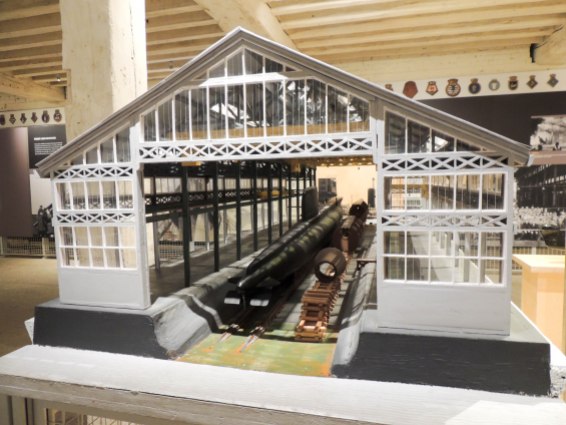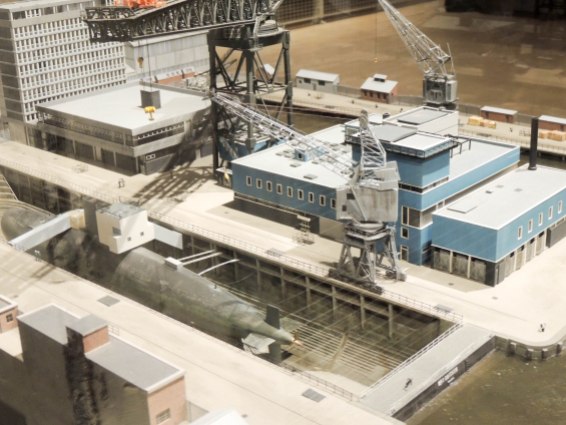Keith and I made a visit recently to the Chatham Historic Dockyard in Kent.

It is not exactly known when Chatham first was used as a dockyard. The fleet used the Medway estuary as a mooring from the early 16th century and there is evidence of shore-based facilities surviving the fleet from around 1509. The first dry dock was built in 1581 and shipbuilding commenced on the site and the first ship, HMS Sunne, was launched five years later. Perhaps the most famous ship to be built here was HMS Victory, the flagship of Admiral Nelson at the Battle of Trafalgar, which was launched in 1765.
A model showing Chatham dockyard in the mid-late 18th century, when its most famous ship, HMS VIctory was built here
At the beginning of the 20th century, the first submarine was produced in the dockyard, HMS C17, and this was to point the future for the Dockyard. The final ship, Okanagan, was launched in 1966 and the dry docks refitted for the task of submarine refits.
Models depicting Chatham in its role as Submarine building and refitting yard
However, this was to be short-lived and in 1981, the ministry of defence announced that the dockyard would close in 1984. In its 414 years of service, it produced over 500 ships and at its height employed over 10,000 skilled workers. The Dockyard site was passed into the hands of a charitable trust who now preserve the site as a historic monument and home to a number of Royal Navy and other seafaring collections and museums.





